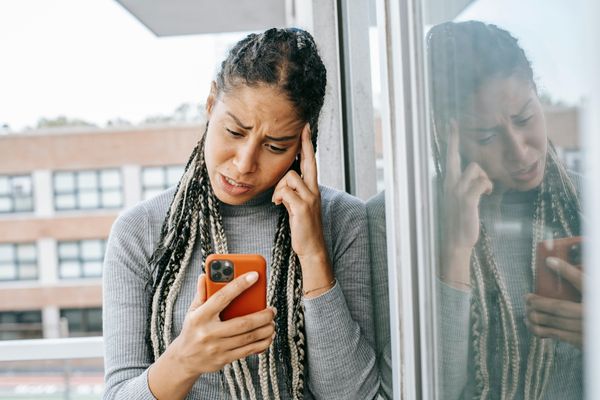
Until we start to lose our balance, we barely notice that it’s there at all. “It starts for a lot of people with simple stuff,” says Dr Anna Lowe, an expert on healthy ageing and physical activity. “Maybe you used to be able to quickly stand on one leg to put a shoe on, and you’ve stopped doing that at some point. Maybe you used to get out of the bath on to a slippery floor without thinking, and now you have to hold on to something. It’s easy to either miss the signs or just put it down to ageing – but it really is something you can affect.”
The key, it is increasingly becoming clear, is to address the decline before it gets serious: and that can happen earlier than you might think.
What is balance? Perhaps surprisingly, those who deal with it have struggled to settle on a single definition. Technically, it’s the complex interaction of several different systems in your body – from muscles, nerves, eyesight and the inner ear to the sensory system that lets you recognise where your body is touching the ground, along with movement receptors within your joints that tell you where your body is in space. It’s not something we’re born with, but also it’s not something we learn in the same way as speech – not quite a sense or a skill, but an ability that we gain early and lose over time.
Most simply, balance is often defined as the ability to distribute your bodyweight over your base of support – a definition that muddles up movement and physical ability with what other people think of as innate. George Locker, a long-term practitioner of tai chi and the author of Falling Is Not An Option, suggests that we think of balance as the thing that lets you learn how to ride a bike after your first few hours of falling off. He describes it as “the rapid and automatic response by your postural muscles to the sensation of imbalance”. Or thinking of balance as something you build, and then something you have – not something you do.
Whatever your definition, a lack of balance is, globally, associated with serious health problems. Earlier this year, the British Journal of Sports Medicine published the results of a decade-long study involving more than 1,700 middle-aged participants, which concluded that an inability to balance was associated with an almost twofold increase in risk of death. Among other health tests, volunteers were asked to stand on one leg with their other leg pressed against it, arms by their sides, eyes fixed straight ahead. After accounting for age, sex and underlying conditions, an inability to hold the position for 10 seconds – given three attempts – was associated with an 84% heightened risk of death from any cause.
Roughly one in five participants failed to pass the test, a percentage that rose in tandem with age – more than one in three (37%) failed between ages 66 and 70. Other studies have made similar connections, with the ability to rise from the floor to a standing position, balance with one eye closed or simply walk at a brisk pace all tied to longevity.
Obviously, this relationship is complex – in some cases, poor balance is a byproduct of more serious conditions, or related to the same lack of physical activity that causes them – but the amount of bodily systems involved in balance suggests that actively maintaining it is likely to keep other problems at bay.

And sometimes, the relationship is causal – the World Health Organization estimates that 684,000 fatal falls occur each year, making falling the second leading cause of unintentional injury death, with a further 37m falls severe enough to require medical attention, leaving many more people dealing with disability or a shortened lifespan.
Again, some of these falls are caused by more serious conditions – but many aren’t. Meanwhile, a loss of balance, as Locker notes, is a medical problem without a medical solution: something that can’t be treated with drugs or surgery, despite its life-altering consequences.
As to what causes a lack of balance in the first place, there’s no single easy answer. Lack of activity has traditionally been blamed, with a globally ageing population – by 2030, it’s estimated that 12.3% of people on the planet will be 60 and over – proving increasingly sedentary. But health professionals point out that balance problems can be caused by a variety of other factors, many of them age-related – impaired vision or slowing nerve signals can be contributing factors, as can declines in the other systems. Blood pressure can dip, leading to lightheadedness, while reflexes and coordination slow with age.
If you experience a sudden, noticeable change in your ability to balance, Lowe says, you should consult a professional – whether it’s caused by a relatively benign inner-ear problem or something more serious, it’s better to be informed. But a slow, barely noticeable decline will be the thing most people should worry about.
Increasingly, efforts are being made to remedy a lack of balance among the groups already most affected by it. A first-of-its-kind fall prevention research centre in Australia has its own team of neuroscientists dedicated to monitoring fall injury patterns, identifying risk factors and developing preventive strategies – using everything from at-home video games to an obstacle course to help older adults mitigate their risk. The Netherlands, meanwhile, has its own physiotherapist-run programmes, rated by the government and partly covered by health insurance, that teach older citizens the kind of fall-breaking skills more commonly associated with judo.
But part of the problem is that once balance begins to fail, the process becomes a downward spiral. Older people who can’t – or are afraid to – walk around outside their homes, let alone tackle anything more strenuous, develop further imbalances as their muscles and sense of balance atrophy, making falls more likely. This means that prevention is better than cure, and with many people’s balance appearing to diminish from midlife onwards, it’s probably better to start sooner rather than later. “The loss of balance starts at 45, and it’s very clear,” says Locker. “You look at 45-year-old men walking down the street, and they’re starting to lose their glutes, the muscles around the buttocks, which are among the biggest, strongest muscle groups in the body. Many guys get big up top with spindly legs from a combination of diet and the kind of activity they do, and that’s difficult to reverse later. So you have to start prevention in midlife.”
“Upstream interventions are key,” agrees Lowe, who is a physiotherapist alongside her role as an associate professor researching strength and balance in midlife. “You’ve got to stay active: older women are far less active than older men, and general activity, just moving around and doing stuff, affects balance a lot. For some people, just try to build in an element of balance and muscle strengthening. Can you walk your dog off-road? Could you do yoga or gym work where you feel a little unsteady? Single-legged movements, such as walking lunges, are a great test of dynamic balance, but if you’re new to exercise, even bilateral movements like squats can provide a challenge.”
Locker also says there’s a crucial distinction to be made between balance as many studies define it – standing upright on one leg – and the kind of weight-bearing, one-legged balance that’s important in real-life situations. “Walking on a level surface doesn’t typically include a very challenging element of balance, as your legs are typically locked when your foot contacts the ground,” he says. “Neither does running, unless you’re doing it off-road, as your feet aren’t in sustained contact with the ground. Midlife is the time to choose what I call the bent knee and ankle sports – skiing, ice skating, inline skating, surfing and standup paddleboard. They all include the kind of sustained knee and ankle bending that builds capacity. Unfortunately, taking up one of these sports isn’t an option for more senior citizens – so they’ll need to find other ways to build the same capacity.”

Tai chi, practised by an estimated 50 million people in China and more than three times that worldwide, is one option. As an aerobic workout, it’s not particularly taxing, but studies have shown that as little as eight weeks of practice can improve older adults’ scores on the Tinetti test – a commonly used measure of competence in basic tasks such as rising from a chair and walking – as well as reducing fear of falling. Longer periods of study show further benefits, with the Yang style proving slightly more effective than the faster-paced Sun style. Again, the former typically uses a lower, more bent-legged stance than the latter – suggesting that this style of balance is something to consider.
“Standing on one straight leg isn’t the same as standing on one bent leg,” says Locker, who began practising tai chi with a master who “could throw guys half his age and twice his size around the room”. “When the leg is straight, the skeleton supports the body, not the postural muscles. Older people are commonly advised to practice brushing their teeth standing on one leg to build their balance, but in order to train the postural muscles to support the lower body, you should use one bent leg.” This way, over time, you’ll build not just balance but work capacity.
Whatever activity you choose – and whatever stage of life you’re at – the take-home lesson is to work on your balance before you need to, not after it becomes an issue. Resistance exercise, whether that means lifting weights or hiking with a backpack, comes with a host of other proven health benefits, from improved bone density to a reduced risk of Alzheimer’s and other forms of dementia. As Locker puts it: everyone’s told to save money for their retirement, and nobody’s taught to save their balance. But both are difficult to get back once they’re gone.
Just 15 minutes a day of balance practice can be beneficial, but if you have more time, use it. Starting earlier helps: use the exercises below and practice on a hard, level surface.

Easy
Standing on one leg – with your hands resting on a work surface if you’re feeling unsteady – see how long you can maintain your balance. Make it harder by going up on to your tiptoes or doing 10 small knee bends. Do this one while you’re brushing your teeth.
Medium

For this movement, start from standing and take a big step forwards, bending your front leg until your trailing knee just brushes the floor. Then push off your front leg and return to a standing position. Progress to walking lunges, where you move across the ground by lunging on alternate sides, and add hand weights in to build muscular strength.
Hard

Try step ups on to a step or box: put one foot on to a box and push through on that heel to step up so both feet end up together. To ensure you aren’t using your trailing leg to help, keep your toes off the ground on that foot. Progress by using a higher step or by taking your trailing leg up towards your chest. Try 10 with your right leg and then 10 with your left, and add hand weights to build strength.
Find more on postural retraining at fallingbalanceexercise.com







